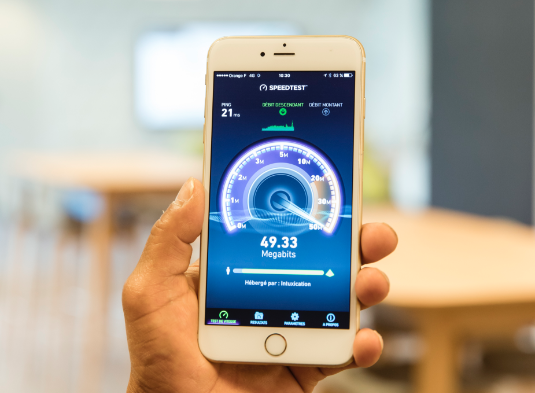DAS: the key to unlocking the full potential of 5G in the enterprise
In all the excitement over 5G, we may be overlooking simultaneous advances in technology of another kind – which may well prove essential to effective 5G use in the enterprise
5G is coming to a phone near you very soon. As of early 2021 there are 220 million 5G subscriptionsi, but GSMA anticipates this is just the tip of the 5G iceberg. Although deployment in many countries has been delayed by the COVID health crisis, GSMA predicts 1.8 billion 5G connections by 2026ii.
It’s no wonder people are excited. The most powerful 5G networks are expected to be at least 10 times faster than 4G LTE and the business impact is widely expected to be significant. According to a recent Deloitte report, 86 percent of networking executives expect advanced wireless to transform their organization within three yearsiii. It is also important to note that this isn’t about replacing aging networks—nine out of 10 business leaders believe that the key benefit of advanced networking technologies such as 5G is to unlock new competitive advantage with applications such as IoT, new business models and improved customer interactions. This is not a small upgrade; it is a quantum leap in technology.

How to get the most out of 5G
One of the reasons for 5G’s speed is that, generally speaking, it uses high-frequency bands more than LTE. Much higher data transfer rates can therefore be achieved, but the distances over which they can be broadcast may be shorter—and getting the signal through walls and windows can become a problem. If you’ve ever had a call drop out as you get into an elevator or move between rooms, you will understand the frustration. This is a consideration that is well known but also easily overlooked.
There is already a huge reliance on cellular technology within buildings of all kinds—from stadiums and conference venues to office buildings and hotels. Mobile phones are used in preference to desk phones in most offices and the sheer ubiquity of the cellular network is something business users take for granted. For 5G to fulfil its potential in the enterprise, it will need to be as ubiquitous—if not more—indoors.
The rise of in-building cellular
The penetration of carrier signals into buildings is not a new problem, and the industry has responded by developing solutions that extend and boost cellular coverage indoors. Widely known as DAS (distributed antenna systems) or in-building cellular, they use a network of internal antennas to boost the signal within a building.
Historically, such systems have been expensive to acquire, deploy and operate. This situation has changed with advancements in DAS technology, such as CommScope’s ERA® digital distributed antenna system. Instead of inflexible solutions with hard-wired capacity allocation, dedicated fiber to each remote, and reliance on coaxial cabling, ERA brings an affordable, flexible, digital approach to DAS.
Utilizing existing IT-standard Category 6A infrastructure, such systems offer capacity routing that is software defined rather than hard-wired—a feature known as “soft sectorization.” They take up less data center space and use less power than traditional analog DAS. As a result, multi-operator in-building cellular systems are no longer confined to stadiums and airports. Increasingly they are being implemented by a wide range of enterprises for use in their office, factory and customer spaces.
With 5G technology finally coming online, it could not have happened at a better time.
Unobtrusive DAS antenna can help ensure indoor 5G coverage throughout the enterprise.
But surely Wi-Fi 6 is the answer?
You may ask: Why worry about 5G when we have Wi-Fi 6 just around the corner? The next generation of Wi-Fi networks will indeed be faster than anything we have seen before, and will bring huge benefits in terms of productivity, efficiency, customer service and the like.
But it is accepted by most networking professionals that Wi-Fi and cellular bring different advantages; one is unlikely to replace the other. Faster Wi-Fi will indeed provide better access to corporate applications, but continuous user experiences, such as voice and video calling, simply work better across cellular because the user’s session is seamlessly maintained across serving radios. Another important point is that infrequent visitors to a given enterprise may not have access to Wi-Fi—nor do they want the inconvenience of having to log on, share data, etc.
There are also applications that require real-time alerts to be sent and received—it is no accident that emergency services around the world rely on cellular networks.
Step boldly into the brave new world of 5G
While DAS is not new, the recent improvement in digital in-building cellular and 5G is perfect timing. Well-informed networking managers know and understand the respective strengths of Wi-Fi and cellular networks, and how they are both of strategic importance to their business. But they also know they cannot assume 5G will bring all its expected benefits unless steps are taken to help ensure it has the in-building signal strength users demand.
Like what you've read...
In-building cellular: the Fact File
An in-depth technical look at solutions for 5G in-building coverage.




